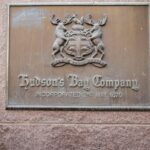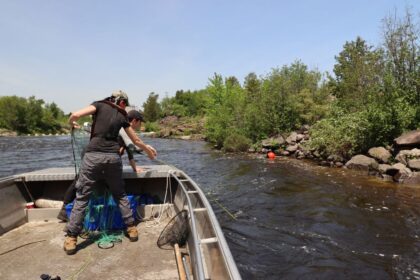British ColumbiaThe Kitsumkalum First Nation has successfully ratified its treaty and constitution, another step forward in the nation’s path towards self-governance.Treaty would grant more than 460 square kilometres of land and self-governing powersCBC News · Posted: Nov 03, 2025 5:54 PM EST | Last Updated: 5 hours agoListen to this articleEstimated 4 minutesKitsumkalum First Nation has about 825 members, and its territory spans the Skeena Region from Terrace, B.C. to Prince Rupert, B.C. (Maggie MacPherson/CBC)The Kitsumkalum First Nation has successfully ratified its treaty and constitution, in another step towards self-governance.The Kitsumkalum Nation is located west of Terrace, B.C. The treaty will grant them more than 460 square kilometres of land, self-governing powers and control over territory and resources.Chief Councillor Troy Sam says the late Don Roberts, a former hereditary chief for the nation, helped steer Kitsumkalum to the modern treaty.”He navigated the tough waters and then when we’re getting into port, it was like he handed me the wheel and said ‘Bring us in’ and now here we are,” Sam said.Sam says Kitsumkalum sought to address their land rights in 1915, nine generations ago, and the spirit of that work was carried forward into the Kitsumkalum Treaty and Self-Government Constitution, now ratified by the community. Official negotiations began in 1993 with the Government of Canada and the Government of British Columbia.”I’m so glad that we don’t have to see a tenth generation go at it,” Sam said of the community’s successful ratification. Voter turnoutIn a statement, Spencer Chandra Herbert, Minister of Indigenous Relations and Reconciliation lauded the Kitsumkalum Nation and noted the high voter turnout. “With negotiations on the Kitsumkalum Treaty complete and a successful ratification vote, the Kitsumkalum people have now chosen their path forward,” Chandra Herbert said. The treaty and constitution ratification required a double majority to be successful, passing a 50 percent threshold. Results shared by the province show that of the 705 eligible Kitsumkalum voters, 625 cast ballots on the treaty, with 569 voting in favour, for approximately 91 percent. For the constitution, 629 people cast ballots, with 563 voting in favour, for approximately 89.5 percent. The Department of Crown-Indigenous Relations said in a statement that Canada is proud to help the Kitsumkalum First Nation transition towards self-governance and that it will work with the nation and province to finalize implementation plans and develop laws over the next several years. “Congratulations to the Kitsumkalum First Nation on the ratification of their Treaty and constitution. Achieving this milestone has taken extraordinary vision, strength, and leadership — along with generations of hard work,” the department wrote. The next step is for British Columbia to ratify the treaty and for all parties to sign it. Then it needs a final ratification by Canada, involving both the B.C. legislature and federal parliament, with each passing treaty-implementation legislation. With about 825 members, the Kitsumkalum territory spans the Skeena Region from Terrace to Prince Rupert. If ratified by all parties, the treaty is expected to go into effect in 2028.Treaty benefitsChandra Herbert added that the Skeena region will see tangible benefits from the treaty, for both the Kitsumkalum First Nation and non-indigenous people, with job creation and economic development, housing and infrastructure development, and increased tourism opportunities. “The Kitsumkalum Treaty is a path to self-governance and self-determination, recognition of rights, revitalization of Tsimshian culture and the Sm’algyax language, collaborative resource management and new economic opportunity,” his statement reads. A draft of the treaty was signed this past June with the provincial government, with Chief Commissioner Celeste Haldane saying the agreement would allow the the Kitsumkalum First Nation to “break free from the shackles of the Indian Act.” The neighbouring Kitselas First Nation also reached a treaty agreement with the province earlier this year, with more than 96 per cent of its enrolled voters taking part in the ratification.In a joint statement issued in August, federal and provincial governments said the agreements reflect a negotiation shift in line with the United Nations Declaration on the Rights of Indigenous Peoples, Canada’s United Nations Declaration on the Rights of Indigenous Peoples Act, and the B.C. Declaration on the Rights of Indigenous Peoples Act. With files from Tom Summer, Jennifer Magher and The Canadian Press
Kitsumkalum First Nation ratifies treaty and constitution











